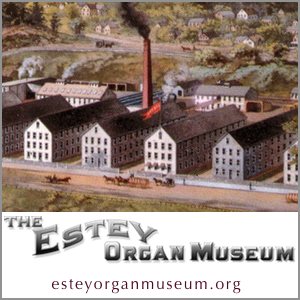This 4rth of July, 2013 marks the 150th anniversary of the end of the battle of Gettysburg. It is worth noting the important part that soldiers from our state played in that battle.
I’m not a Civil War history buff, but I have read Howard Coffin’s Nine Months to Gettysburg. It is the account of the Second Vermont Brigade whose nine month enlistment was days from expiring when the fighting at Gettysburg began.
These soldiers found themselves in the thick of the fighting in the turning point battle of the war. From James McPherson’s Battle Cry of Freedom, “Union veterans in 3 year regiments had a low opinion of most nine months regiments. But the outstanding peformance of the Second Vermont Brigade at Gettysburg, which helped turn the tide of the battle, changed their minds insofar as the Vermonters were concerned.”



The Second Vermont Brigade and the Repulse of Pickett's Charge
Pickett’s charge began at about 3 pm, July 3, 1863.
From Howard Coffin’s Full Duty, Vermonters in the Civil War: “Lee had ordered more than 12,000 men- 11 brigades – to advance across a mile of open ground to attack, and breach if possible, the middle of the long Union line. Maj.Gen. George Pickett and his 5,000 soldiers from Old Dominion were to lead the charge.”
Union cannon opened fire and did terrible damage, yet the rebel advance continued.
George Benedict of Vermont General George Stannard’s staff wrote:
“…the Vermont Regiments…occupied a position advanced from the general front of the army, were ordered up in a line by Gen. Stannard. The enemy’s right was now aiming apparently directly upon the 14th Regiment;”
At the last minute before their lines came together, the Rebels veered to the Vermonter’s right and left their flank exposed.
Benedict continues:
“General Stannard ordered forward the Thirteenth and Sixteenth regiments to take the enemy on the flank.”
Coffin writes:
“Then the two regiments… swung like a great door out into no-man’s-land, turning 45 degrees until facing directly at the mass of the Confederate attack now piled in front of the Clump of Trees.
Acting as hinge of the whole movement was…Sgt.James Scully, until nine months previous a dry goods clerk in a Burlington store.”
Benedict (who later become state historian) called him, “the pivot of the pivotal moment of the pivotal battle of the war.”
Coffin continues:
“The Vermont battle line, hundreds of yards long and reaching almost to the Emmitsburg Road came beautifully into line, and suddenly there were 900 Vermont riflemen aiming directly at the Confederates exposed right flank.”
Benedict again:
“This was more than the Rebels had counted on. They began to break and scatter from the rear in less than five minutes, and in ten it was an utter rout.”
“Glory to God, glory to God, see the Vermonters go at it,” shouted Maj.Gen. Abner Doubleday on Cemetery Ridge.
According to Doubleday, Confederate prisoners said after the battle that “What ruined them was Stannard’s brigade on their flank, as they found it impossible to contend with it in that position; they drew off in a huddle to get away.”
Civil War
A trip to Gettysburg is a wonderful way to relive this battle. It was enormous and horrifying. Vermonters indeed were key participants in this battle. The Gettysburg cemetery contains a large number of graves that hold the remains of Vermonters who died in the battle. Along the road that marks the Vermont lines during Picketts Charge are many monuments that commemorate the various Vermont units that were involved in this great battle.
Locally, there is a large monument located at the entrance to the BUHS football field that commemorates Brattleboro’s involvement in the Civil War. It seems that the area was a mustering ground for Vermonters who were leaving for the war. After the war the area housed a hospital to treat those who were too sick or injured to continue to their homes.
Brattleboro's Role
I’m glad you mentioned the monument, the mustering and the hospital at Brattleboro. I meant to get around to those eventually. Most of Vermont’s soldiers for the Civil War departed from Brattleboro on a train leaving from near where today’s station is located and returned the same way (those that survived). I try to imagine those scenes of departure and can not.
From Howard Coffin’s Full Duty:
“Mrs. Fuller noted that whenever a regiment left for war, the women of Brattleboro made hot coffee and served food to the soldiers.”
Vermont’s Governor Holbrooke intervened with the War Dept. to get VT soldiers sent home.
Stories of the conditions in Union hospitals appalled Vermonters and Holbrooke tried several times to aid them till finally a 6 month “experiment” was agreed upon and the state began sending agents to the various army hospitals to find wounded Vermonters and send them home.
First there was the Brattleboro hospital:
“The opening of the military hospital in Brattleboro was a great relief to the residents of South Main and Canal Streets (near the encampment), Mrs. Fuller recalled, “for…nearly every house had a sick soldier in it to care for, and many of them died. People were allowed to visit the wards, and carry things to entertain the convalescents. How they did enjoy looking over our photograph albums, and books of prints. Some did so want home cooking.””
Eventually there were 3 Vermont hospitals including one on the heights overlooking Montpelier, near where Vermont College stands today. There was also one on the Burlington lakefront.
Brattleboro's Role
Local legend has it that my childhood home was one of the Civil War barracks that was dragged to its present location from the Fairgrounds to become the central portion of the house where I grew up. No way to prove that however.